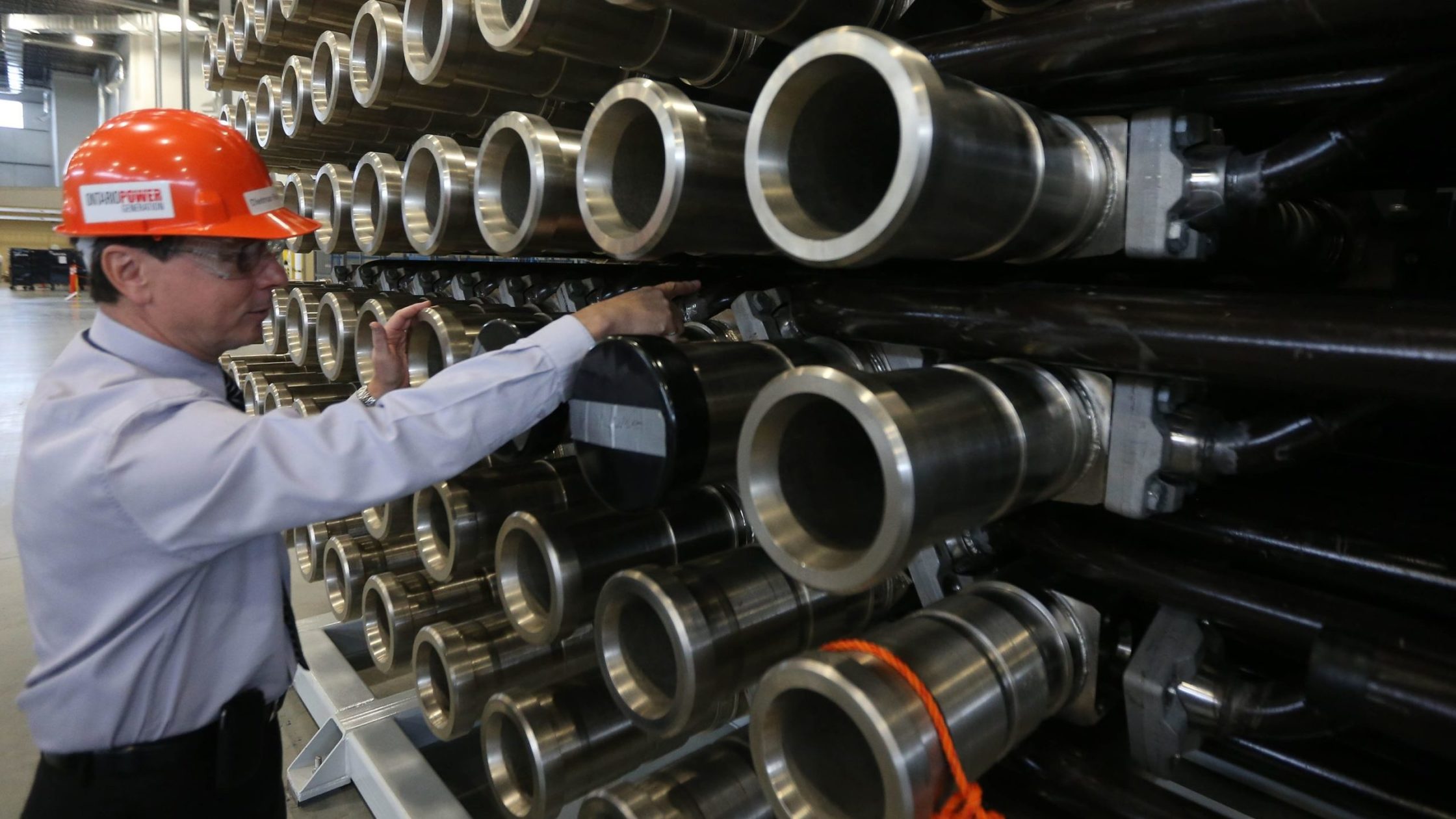Provinces have teamed up to launch strategic plan to take advantage of low emissions technology
Follow CEC on Facebook CEC Facebook
Follow CEC on Twitter CEC Twitter

Nuclear energy already plays an important role in the Canadian electricity mix, according to the International Energy Agency (IEA).
Driven by facilities in Ontario, in 2020 nuclear was the second-largest source for electricity generation in Canada after hydropower, contributing 15 per cent of final electricity consumption, the IEA said in January 2022.
Provinces Join Up
SMRs are small-scale nuclear reactors that produce 300 megawatts of energy or less. By comparison, the eight reactors at the Bruce Power nuclear plant in Ontario have combined capacity of 6,600 MW.
Nuclear energy is the Ontario’s largest source of power generation, according to the Canada Energy Regulator.
Last week Ontario, along with New Brunswick, Alberta and Saskatchewan launched a joint strategic plan to develop SMRs.
According to their report, the units can be used for everything from power in remote locations and backup for intermittent renewables to industrial steam generation and hydrogen production.
SMRs are described as “modular” because instead of being constructed from parts at the site where they will be used, they are delivered as already manufactured units to be installed.
Emissions Reduction
One 300-MW SMR could generate enough clean electricity each year to power 300,000 homes, according to the joint provincial strategy.
A single unit of that size can prevent between 0.3 to 2 megatonnes of greenhouse gas emissions per year, according to analysis by legal firm McCarthy Tétrault LLP.
Canada’s latest report to the United Nations estimated total emissions from public electricity and heat production at 69 megatonnes in 2019.
The vision for SMRs in Canada is a “fleet approach” – deploying multiple units together – to keep costs competitive, McCarthy Tétrault LLP said.
That same fleet approach to SMRs is required on a global scale if the technology is to make a difference reducing world emissions, according to Rumina Velshi, CEO of the Canadian Nuclear Safety Commission.
Oil Sands
Gorman sees a major opportunity for SMRs in Canada’s oil sands.
“There are serious discussions underway right now between the oil sands operators – the large ones that have committed to a net zero future – and the nuclear industry, looking at the technical requirements and which models are going to be best to be on site,” he says.
The world’s first SMR units are already in use, according to the International Atomic Energy Agency. Units are operating aboard a floating nuclear power plant in Russia and set to provide low carbon heat to decarbonize industrial processes in China, the agency said on April 1.
SMRs in Canada
Canada’s federal government has indicated support for SMRs, releasing its SMR Action Plan in December 2020. Ottawa announced $67.5 million to advance SMR projects in 2020-21 through Science and Economic Development Canada, according to McCarthy Tétrault LLP.
The country’s first grid-scale SMR, to be constructed at the Darlington nuclear site in Ontario, is expected to be operational by 2028.
Ontario Power Generation announced in December 2021 it is working with GE Hitachi Nuclear Energy on engineering, design, permitting and site preparation, which is expected to start this year.
The joint provincial plan between Ontario, New Brunswick, Alberta and Saskatchewan sees this project followed by units in Saskatchewan in service in 2034 and units in New Brunswick starting in in 2029.
Share This:





 CDN NEWS |
CDN NEWS |  US NEWS
US NEWS 



































COMMENTARY: Canadians Should Decide What to do With Their Money – Not Politicians and Bureaucrats